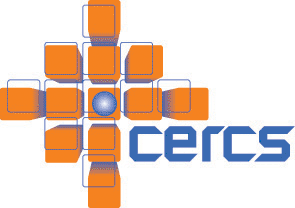Visualization of High-throughput 3D Correlative Fluorescence-Focused Ion Beam Scanning Electron Microscopy Image Data Challenges
-- Eduardo Rosa-Molinar, University of Puerto Rico - Rio Piedras
Abstract:
Connectome and/or synaptome projects currently underway in my laboratory will generate large numbers of diverse image types at multiple scales. Integrating complex and large multimodal/multiscale image data will be critical for integrating neural circuitry at all levels of organization. To make the best use of these increasingly complex and large image data resources, the scientific community must be provided with methods to query, analyze and crosslink these resources to provide an intuitive visual representation of the data. In this presentation I will describe our efforts to create a digital atlas framework to facilitate the organization, analysis, and display of multimodal/multiscale image data from laser scanning confocal microscopy (LSCM) and focused ion beam scanning electron microscopy (FIB-SEM), and I will highlight some of the challenges. The atlas construction work flow can be parsed into four major activities: 1) image acquisition, 2) image processing and atlas construction and 4) atlas dissemination. Disseminating the atlas data presents a major data management challenge. In collaboration with Hewlett-Packard (HP) Labs, we are in the process of building a flexible architecture that will have provisions to store and display image data streamed from the internet. This will allow, almost anyone, even those with a modest personal computer, to view virtual sections of the image data. This system is based on the HP StorageWorks X9000 Network Storage Systems and Open Cirrus, an open cloud-computing research testbed designed to support research into the design, provisioning, and management of services at a global, multi-datacenter scale. With its fast data network and massive storage capabilities, we will have the infrastructure to host and deliver our data stacks and reconstructions. Ultimately, we aim to produce a facile interface in which users will be able to navigate the connectome and/or synaptome in a manner similar to that used with Google Maps.
Bio:
Eduardo Rosa-Molinar, Ph.D. is a tenured associate professor of biology at
the University of Puerto Rico-Rio Piedras with an adjunct appointment at the
Institute of Neurobiology, University of Puerto Rico School of Medicine.
Dr. Rosa-Molinar is the Immediate-Past-President of the Histochemical
Society and currently serves on the Federation of American Societies for
Experimental Biology (FASEB) Board of Directors.
His research area is cellular and circuit neuroscience, specifically deciphering the connectivity of neurons (i.e. connectiomics) at synapses (i.e. synaptomics) by using and developing novel high-throughput three-dimensional correlative light and electron based imaging technologies and methods.
Dr. Rosa-Molinar received his B.S. at the University of Alabama and his Ph.D. at the University of Nebraska Medical Center.
Contact Us | ECE Home | CoC Home | Georgia Tech Home © 2001-2011 CERCS at Georgia Tech :: Atlanta, Georgia 30332 Last Modified:Monday, 26-Sep-2011 09:25:22 EDT
